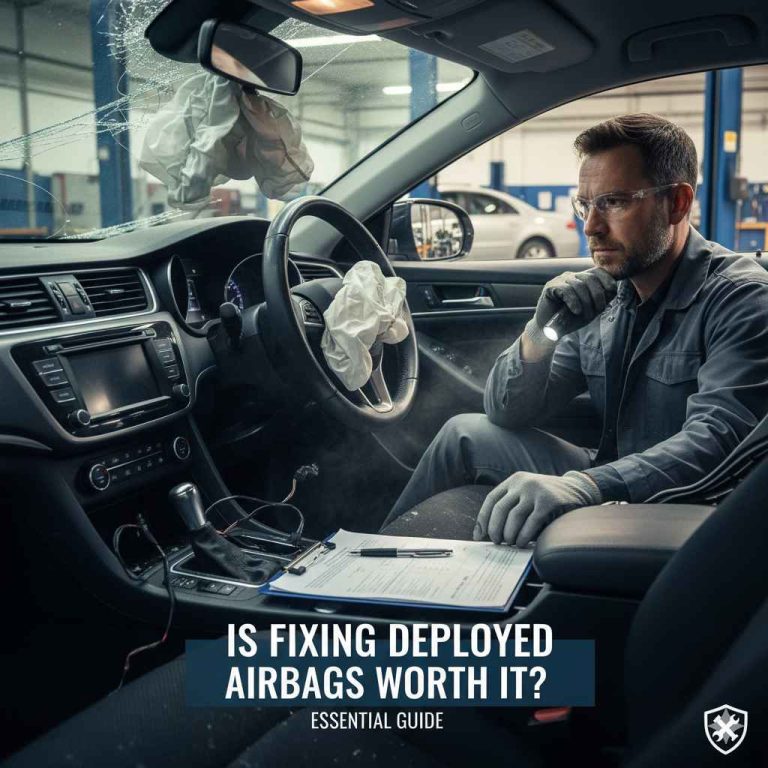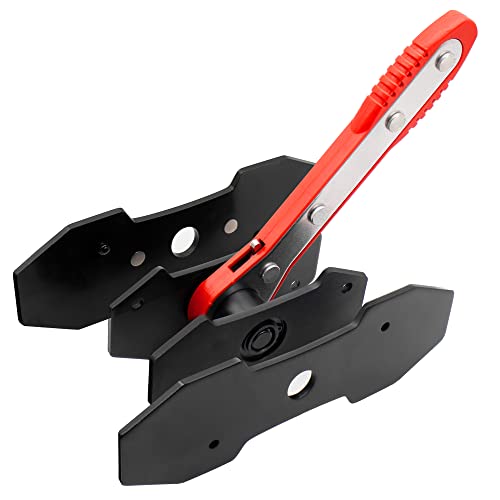Can a Car Last 300,000 Miles?: Unveiling Longevity Secrets
Yes, a car can last 300,000 miles with proper maintenance and care. Factors like make, model, and driving habits play significant roles.
Many drivers dream of hitting the 300,000-mile mark with their vehicles. Achieving this milestone requires dedication to regular maintenance, including oil changes, tire rotations, and brake inspections. Some car brands are renowned for their longevity, often surpassing this distance without major issues.
Understanding the importance of routine checks can prevent costly repairs and extend a vehicle’s lifespan. Additionally, responsible driving habits, such as avoiding rapid acceleration and harsh braking, contribute to a car’s durability. With the right approach, reaching 300,000 miles is not just a possibility but an achievable goal for many car owners.
Introduction To High-mileage Vehicles
High-mileage vehicles can achieve incredible longevity. A milestone of 300,000 miles is possible with proper care. Many factors affect how long a car lasts. Regular maintenance is key to reaching high mileage.
Quality parts and fluids contribute to a car’s lifespan. Driving habits also play an important role. Gentle driving can reduce wear and tear. Environmental conditions impact vehicle health as well.
Some cars are built to last longer than others. Brands known for reliability often reach this milestone. Enthusiasts often share tips for maintaining high-mileage vehicles.
Factors Influencing Vehicle Longevity
Engine durability plays a big role in a car’s lifespan. A strong engine can easily reach 300,000 miles. Regular oil changes and proper maintenance help keep engines running well.
Transmission lifespan also affects how long a car lasts. A well-maintained transmission ensures smooth shifting. Avoiding heavy towing and using the right fluid can extend its life.
Corrosion resistance is vital for vehicle longevity. Cars exposed to salt or moisture need protection. Regular washing and applying sealants can prevent rust from damaging the body.
Maintenance: The Key To Longevity
Regular maintenance is vital for a car’s lifespan. Keeping up with routine service helps prevent major issues. Simple tasks like oil changes and tire rotations are essential. They keep the engine running smoothly.
Preventive care can save money in the long run. Catching small problems early stops them from becoming big ones. Inspecting brakes and fluid levels can avoid unexpected breakdowns. This attention keeps drivers safe and cars reliable.
| Routine Service | Benefits |
|---|---|
| Oil Changes | Improves engine health |
| Tire Rotations | Ensures even wear |
| Brake Inspections | Enhances safety |
| Fluid Checks | Prevents overheating |
Top Cars Known For Lasting 300,000 Miles
Many cars can last 300,000 miles or more. Some brands have a great reputation for durability. Here are a few models known for their longevity:
- Toyota Camry – Reliable and easy to maintain.
- Honda Accord – Known for its strong engine and low repairs.
- Subaru Outback – Excellent for various terrains and conditions.
- Ford F-150 – Tough and built to last for years.
Many drivers share stories of cars reaching high mileage. For example, a 2005 Toyota Corolla hit over 400,000 miles. Another owner reports a 2003 Honda Civic lasting 350,000 miles. Regular maintenance helps these cars last longer. Keeping up with oil changes and tire rotations is key.
The Role Of Driving Habits
Driving habits play a major role in a car’s lifespan. Aggressive driving can lead to faster wear and tear. Smooth acceleration and gentle braking help maintain engine health.
Speeding increases engine stress and reduces fuel efficiency. Consistent high speeds can cause tire wear and overheating.
Driving conditions also affect a car’s durability. Harsh weather, like extreme heat or cold, can cause issues. Stop-and-go traffic leads to more engine strain compared to highway driving.
| Driving Style | Impact on Car |
|---|---|
| Aggressive | Increased wear and tear |
| Smooth | Better engine health |
| High Speed | More stress on components |
Technological Advances In Car Longevity
Many innovations have changed how cars are built. New materials make vehicles stronger and lighter. This helps cars last longer. Advanced technology in engines improves efficiency. Better maintenance systems help owners take care of their cars easily.
Future designs focus on durability and sustainability. Electric cars are becoming popular. They usually have fewer moving parts. This means less wear and tear. Smart technology can alert owners about needed repairs.
| Innovation | Benefit |
|---|---|
| New Materials | Stronger and lighter vehicles |
| Advanced Engines | Better fuel efficiency |
| Smart Technology | Easy maintenance alerts |
| Electric Vehicles | Less wear and tear |
Cost-benefit Analysis Of Keeping A Car For 300,000 Miles
Keeping a car for 300,000 miles can be smart financially. Maintenance costs may be lower than buying a new car. Regular service helps prevent major issues. Older cars often have lower insurance costs too.
Consider replacing your car if repairs are too expensive. Frequent breakdowns can add up quickly. If fuel efficiency drops, it might be time for a change. Safety features in new cars can also be a big advantage.
Think about your driving habits. If you drive a lot, a new car can be more reliable. Resale value also decreases as mileage increases. Balance costs with what you need from a vehicle.
Personal Stories Of High-mileage Car Owners
Many car owners share their amazing stories about high-mileage vehicles. One owner, Jane, drove her Honda to 350,000 miles. She always followed the maintenance schedule and used quality oil. Regular check-ups helped her avoid big problems.
Another owner, Mike, reached 300,000 miles in his Toyota. He believes simple care is key. Routine tasks like tire rotations and brake checks made a big difference.
Lessons from these owners show that dedication matters. Keeping up with maintenance can lead to a longer car life. Owners often say it’s like having a reliable friend on the road.
Maintaining Safety In An Aging Vehicle
Old cars need regular safety checks. This helps keep everyone safe. Look for brake issues, tire wear, and fluid leaks. Check lights and signals often. It is important to replace worn parts quickly.
Upgrading safety features can make a big difference. Adding backup cameras and blind-spot monitors helps drivers see better. Newer seat belts and airbags offer extra protection. Anti-lock brakes can improve stopping power. Making these upgrades can help any aging vehicle stay safe on the road.
The Environmental Perspective
Long-term car use has a big environmental impact. Cars that last 300,000 miles reduce waste. Fewer cars mean less pollution and lower resource consumption. Keeping a car longer saves money too.
Using a car for many miles can be sustainable. Regular maintenance helps keep cars running well. This practice also improves fuel efficiency. A well-maintained vehicle releases fewer emissions.
Choosing eco-friendly cars can make a difference. Electric and hybrid cars are good options. They help reduce the carbon footprint. Making smart choices benefits both the environment and your wallet.
Frequently Asked Questions
Can All Cars Reach 300,000 Miles?
Not all cars can reach 300,000 miles. Factors like maintenance, driving habits, and the vehicle’s make and model play crucial roles. Regular servicing, quality fuel, and careful driving can significantly increase a car’s lifespan. Choosing reliable brands also improves the chances of hitting that milestone.
What Maintenance Is Needed For High Mileage Cars?
High mileage cars require consistent maintenance to perform well. Regular oil changes, tire rotations, and fluid checks are essential. Additionally, monitoring the brakes, battery, and transmission can prevent major issues. Following the manufacturer’s service schedule helps ensure the car remains reliable as it ages.
How Can I Extend My Car’s Lifespan?
To extend your car’s lifespan, prioritize regular maintenance. Keep up with oil changes, tire rotations, and fluid replacements. Drive gently and avoid aggressive acceleration and braking. Lastly, store your vehicle in a garage to protect it from harsh weather conditions, which can cause wear and tear.
What Are Signs Of A Failing Engine?
Signs of a failing engine include unusual noises, poor acceleration, and excessive smoke. Warning lights on the dashboard can also indicate issues. Additionally, if you notice a drop in fuel efficiency, it may signal engine trouble. Addressing these symptoms early can prevent costly repairs later.
Conclusion
A car can indeed last 300,000 miles with proper care and maintenance. Regular oil changes, timely repairs, and careful driving habits play vital roles in longevity. Investing in quality parts and services enhances durability. With commitment, your vehicle can reach impressive mileage and serve you well for years to come.







